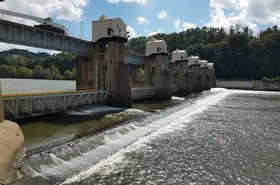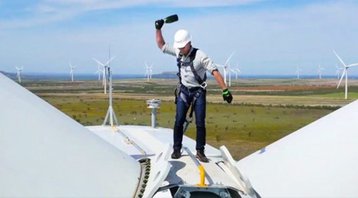Most people don’t give them a second thought, but data centers have become part of the critical infrastructure of modern society, and they are also becoming critical enablers of decarbonization.
Look at the devices around you. When did you last have a video call, do some online shopping, share a file or do some banking on your mobile? Do you store your photos in the cloud, use satnav or play online video games? These are just a few examples of how our way of life is now based on what goes on in data centers.
Dig a little deeper and you’ll find that interconnected data center infrastructure enables every part of modern life. It allowed people to work from home during Covid, paving the way to hybrid working. It makes telemedicine and the emergency services work, and speeds up all types of research and development.
For businesses, the huge volume of data stored and processed in data centers powers logistics, HR, finance and sales, with public cloud infrastructure and applications that are revolutionizing every sector from entertainment and gaming to government and banking.
Physical to digital
This transformation is happening at a breathtaking pace. A lot of what was once physical is now digital, and lives in data centers. An IDC report predicts that by 2026, organizations that successfully adopt a data-driven approach will generate more than 25 percent of their revenues from digital products, services or experiences.
Because this new way of life is now taken for granted, it is impossible to calculate what the social and environmental benefits of the digital society have been so far. But they include improved collaboration, greater competition, lower costs, more and faster product innovation, scientific breakthroughs, reduced travel and use of materials, and revolutionary new ways of using data like the Internet of Things and Artificial Intelligence
In-house to shared
The bigger and more specialized data centers have become, the more efficiently they have handled workloads. Over the last decade, legacy in-house data centers have migrated much of their IT workload to colocation or cloud facilities, massively improving operational efficiency. To a great extent this increase in efficiency has offset the potential negative impact of the exponential growth in data.
But data levels will continue to grow and so will data centers. Current estimates are that 120 Zettabytes of data will be created, captured, copied and consumed this year, and this will grow by over 50 percent by 2025.
While Power Usage Effectiveness (PUE) continues to improve as in-house equipment shifts to larger shared facilities, improvements will be smaller and overall power consumption will rise faster. Something altogether new needs to be done to ensure that the positive impact of data centers does not turn negative.
Greening the grid
Fortunately, that is what much of the data center industry has been doing, led to a great extent by the largest public cloud providers and innovators in the colocation sector. As well as being critical enablers of our digital society, data centers are now becoming critical enablers of decarbonization.
This begins with renewable energy. The world’s top four purchasers of clean energy are cloud service providers, and colocation providers feature strongly in the top 100. Renewables now account for over 30 percent of power generation.
In 2023 data centers will account for a phenomenal two thirds of renewable power consumed by businesses in the USA. And this is not putting a squeeze on other would-be renewable power users, or stealing power from others.
The bulk of this is ‘additional’ power, generated by new wind, solar or geothermal projects via virtual power purchase agreements (VPPAs). ‘Additionality’ ‒ growing the number of renewable facilities ‒ is a key focus for VPPAs, and has helped to speed up the overall greening of the world grid.
Virtual to real
Data centers are nothing if not ambitious, and they are now aiming higher. Amazon is the world’s largest purchaser of renewables. Microsoft has committed to not only be carbon negative by 2030 but to erase its total carbon footprint going back to 1975 by 2050. Google has committed to go beyond Virtual Power Purchase Agreements (VPPAs) and run on 24x7 carbon-free power by 2030.
Iron Mountain Data Centers, already running on 100 percent renewable power, was the first colocation provider to make the same commitment. The key to using real rather than virtual renewable power ‒ genuine decarbonization ‒ is tracking, analysis and rerouting. There are advantages to being a relatively new sector. Because the data center industry is new, it can do things differently. And, like the rest of society, it can take advantage of these new data-driven technologies to power its own transformation.
Changes and challenges
Not all data centers are green, even if many are well on their way. Data centers are not genuinely sustainable yet, and data processing and power consumption will continue to grow as society relies on digital infrastructure more and more.
But data centers are definitely changing the way we live bit by bit. And many are also doing their best to tackle the challenges of the climate crisis. So next time you're streaming Netflix or scrolling through Instagram, spare a thought for this new and almost invisible industry which is growing fast and making such an important contribution to modern life.
More from Iron Mountain Data Centers
-

5 key implications for information lifecycle management
Keeping data secure throughout its lifetime
-

Iron Mountain signs 24/7 PPA to draw hydroelectric power from existing US dams
Rye Development will add generation capacity in the US mid-Atlantic region
-

Sponsored Iberian tiger: Why Madrid is hot and getting hotter
Following the cloud all the way to Madrid


